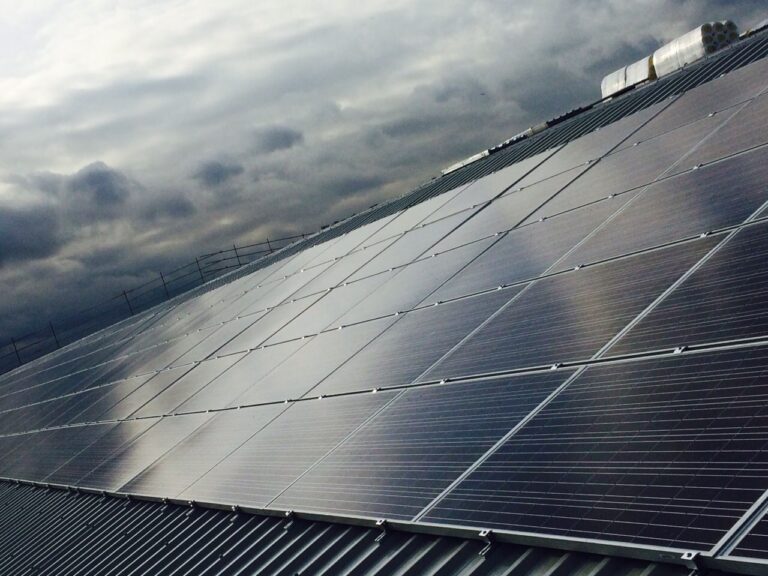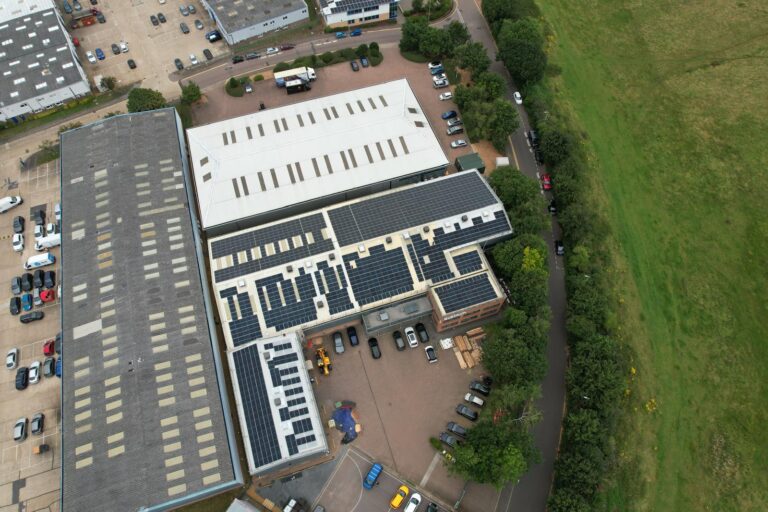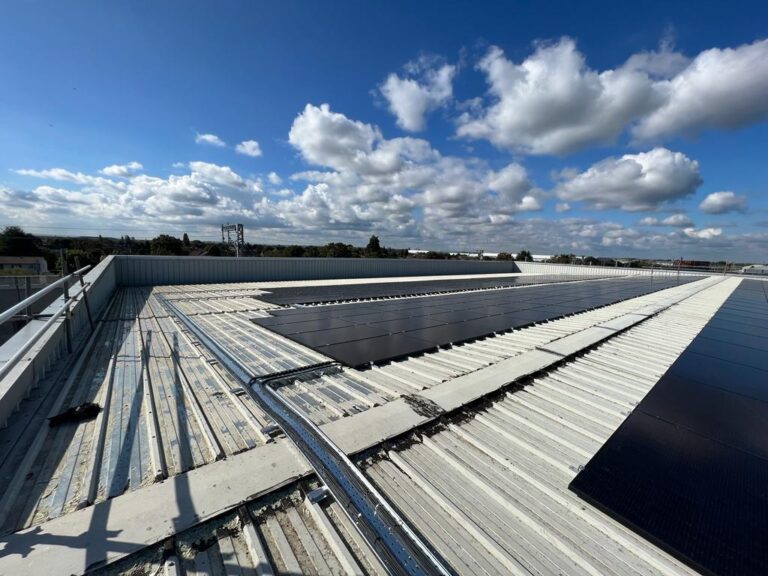Commercial Solar Panels in the UK: Costs, Types, and Technology Guide
Investing in commercial solar panels is no longer just a sustainability statement; it’s a shrewd, strategic financial decision.
Forward-thinking businesses across the UK are turning to solar PV systems to take control of rising energy costs, meet environmental targets, and improve long-term energy security. Whether you’re managing a warehouse, factory, office park, logistics hub, or multi-site operation, comprehending the whole picture, costs, technology choices, incentives, and return on investment is essential for making the right call and opening long-term value for your business.
What Do Commercial Solar Panels Cost in the UK?
The cost of a commercial solar panel system in the UK typically ranges between £37,500 and £135,000, depending on several key factors such as system size, installation complexity, and the specific requirements of your building. While larger systems ranging from 50kW to 200kW offer greater economies of scale and faster returns, smaller commercial systems starting from around 10kW are also available and ideal for smaller premises or businesses with limited roof space or lower energy demand. Each system is custom-designed to increase its output and long-term value.

System Size | Approximate Cost | Estimated Payback Period |
50 kW | £37,500 | ~4 years |
100 kW | £72,500 | ~3 years, 10 months |
150 kW | £105,000 | ~3 years, 8 months |
200 kW | £135,000 | ~3 years, 6 months |
Note: Pricing is for illustration only. Actual costs depend on the project and vary based on factors such as building structure, system size, grid connection, and site conditions. A complete site survey is needed for an accurate quote.
Key Factors Influencing Commercial Solar Installation Costs
Making an investment in commercial solar means more than just comparing quotes; it requires a clear appreciation of the factors that influence overall pricing and long-term value. From system size and panel technology to the complexity of your site and regional labour rates, each element plays a role in determining both upfront costs and future savings. Here’s what you need to know to make an informed, cost-effective decision for your business:
1. System Size
Larger solar panel systems benefit from economies of scale, meaning the cost per kilowatt decreases as you scale up your installation. A 200kW system offers better value per unit than a 50kW one.
2. Panel Type
- Monocrystalline panels: High-efficiency, sleek aesthetics, and longer lifespan, but carry a higher upfront cost.
- Polycrystalline panels: More affordable, with solid performance but slightly lower efficiency.
- Thin-film panels: Lightweight and flexible, ideal for unconventional rooftops, but less efficient in small spaces.
3. Installation Complexity
Labour costs rise with:
- Tall or sloped roofs
- Shading obstructions
- Limited roof access
- Structural reinforcements
4. Location
Installation and labour costs fluctuate regionally. Expect higher rates in London and the South East, compared to the Midlands or Northern regions.
5. DNO Connection Costs
DNO (Distribution Network Operator) connection costs for commercial solar installations can vary significantly. Smaller systems are usually cheaper, whereas larger projects might incur higher fees because of grid upgrades or assessments. Most commercial installations need G99 or G100 applications.
6. Additional Equipment
- Inverters: Convert DC electricity into usable AC power, critical for system performance.
- Mounting Systems: Vary based on roof type (flat, pitched, wall-mounted).
- Grid Connection Upgrades: May be required for larger systems exporting to the National Grid.
Commercial Solar Panel Technologies: Pros and Cons
When selecting a commercial solar PV system, the type of panel you choose has a direct impact on performance, space requirements, and overall return on investment. Different technologies suit different building types and operational needs, so it’s important to weigh up the benefits and limitations of each. Below is a breakdown of the three most common commercial solar panel types available in the UK market today:
Panel Type | Pros | Cons |
Monocrystalline | High efficiency, best for limited roof space | Higher upfront cost |
Polycrystalline | Cost-effective with solid performance | Lower efficiency, requires more installation area |
Thin-Film | Lightweight, flexible, ideal for large surfaces | Lower output, shorter lifespan in harsh weather |

Which Panel Type Is Right for Your Business?
Choosing the right solar panel technology depends on several factors, including your available roof or façade space, energy usage patterns, site orientation, and budget. For example, a compact urban site may benefit more from high-efficiency monocrystalline panels, while large industrial roofs with ample space might favour the affordability of polycrystalline or thin-film solutions.
Ultimately, the best results come from a bespoke approach, one that matches the right technology to your site conditions and financial goals. Our team will assess your property and energy needs to recommend the most effective, future-proof system for your business.
Leading Commercial Solar Panel Manufacturers
In the UK commercial solar market, reputable manufacturers play a crucial role in ensuring system longevity and performance. Some of the most trusted names include:
✅ Trina Solar – Cost-effective and reliable.
✅ DMEGC – Unprecedented value and reliability.
✅ JA Solar – High-efficiency panels for commercial scale.
✅ LONGi Solar – Known for developments in monocrystalline technology.
✅ Q CELLS – Excellent performance in low-light conditions.
✅ REC Group – Premium European brand with long warranties.
We only recommend and install panels with strong warranties, Tier 1 bankability, and proven real-world performance data.
Incentives and Financial Support
✔️ Smart Export Guarantee (SEG)
Earn revenue by selling unused solar electricity back to the grid via licensed energy suppliers.
✔️ VAT Relief
Many commercial solar systems now qualify for reduced VAT rates, improving the return on your capital outlay.
✔️ Regional & National Grants
Schemes like the UK Shared Prosperity Fund (UKSPF) or LEP-driven incentives can help subsidise installation costs. Some sectors (e.g., agriculture, manufacturing) may qualify for targeted grants.

What’s the ROI on Commercial Solar Panels?
Energy savings can be substantial, especially for operations running 24/7 or with high consumption.
ROI timelines are increasingly attractive, with some businesses seeing payback within 3–5 years.
Even after breaking even, your system continues to produce free electricity for 20–25 years.
Export income via SEG accelerates the return on investment.
Why Now Is the right time to invest in Commercial Solar
➡️ Energy prices remain volatile
➡️ Grid decarbonisation is accelerating, with pressure on businesses to demonstrate sustainability
➡️ Technology is more affordable and efficient than ever
➡️ Government policy supports renewable investment
Ready to SCOUT Your Options?
Excel Energy provide:
✅ Customised site assessments
✅ Detailed ROI forecasts
✅ Expert guidance on incentives and funding
✅ Turnkey installations with long-term support
Get in touch today for a no-obligation consultation and discover how commercial solar can work for your business.
